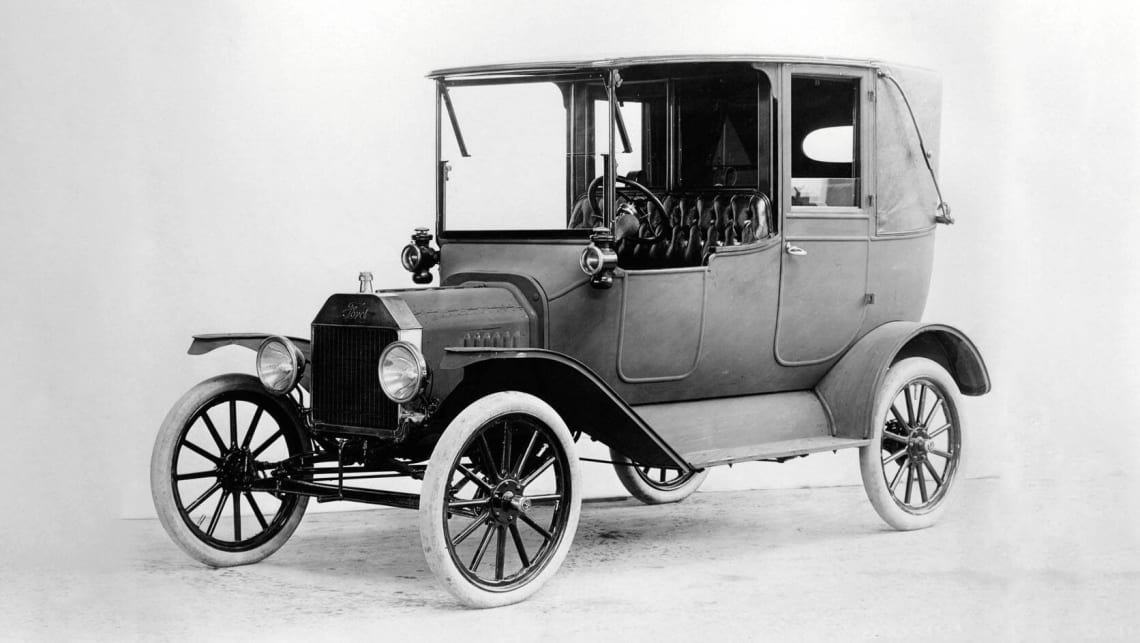Who invented the first car and when was it made?

Henry Ford usually receives credit for the first assembly line and mass production of Model T cars in 1908.
Who invented the first car? The generally accepted answer is Karl Benz from Germany, and the people who work for the company that grew out of his name, Mercedes-Benz, never get tired of telling you.
However, standing in the Mercedes-Benz Museum in Stuttgart, I feel both awe and intense surprise when I see the world's first car in transparent flesh. Indeed, the term "horseless cart" used at the time seems more appropriate, but it was Benz's car, patented in 1886, that gained recognition as the first automobile ever made, although other road vehicles preceded his work by many years. .
Why is that, and does Benz deserve the credit for building the world's oldest car?
Adds fuel to the fire of the dispute about the first car
It can, of course, be argued that the absurdly talented genius known to his friends as Leo pre-empted Benz in developing the first automobile by several hundred years.
Among the many incredible inventions of the great Leonardo da Vinci was the design of the world's first self-propelled vehicle (without horses).
His ingenious contraption, drawn by his hand in 1495, was spring-loaded and had to be wound up before setting off, but it was very complex and, as it turned out, quite feasible.
In 2004, a team from the Institute and Museum of the History of Science in Florence used da Vinci's detailed plans to create a full-scale model, and sure enough, "Leonardo's car" actually worked.
Even more incredible is that the ancient design includes the world's first steering column and rack and pinion system, the foundation of how we still drive our cars today.
To be fair, however, Leonardo probably never got around to putting his idea of a prototype to fruition – in fact, it would have been next to impossible with the tools available to him at the time – or riding it around town. He even forgot to turn on the seats.
And, when it comes to the most common modern cars we know about today, something vital was missing from his car that Benz could boast of; the first internal combustion engine and therefore the first gasoline car.
It was the use of this fuel and the design of the engine that ultimately won the race to create the world's first horseless carriages, and that is why the German is gaining recognition despite the fact that a Frenchman named Nicolas-Joseph Cugnot built the first, self-propelled road vehicle. which was basically a tractor with three wheels for use by the military, as early as 1769. Yes, it could only reach speeds of about 4 km/h and it wasn't really a car, but the main reason it missed the status of a household name was that its contraption ran on steam, which made it bigger. similar to a ground train.
Keep in mind that the Automobile Club of France still credits Cugnot as the creator of the first automobile. Tres French.
Similarly, Robert Anderson overlooks the claim that he made the world's first automobile because his self-propelled machine, built in Scotland in the 1830s, was an "electric cart" rather than an internal combustion engine.
Of course, it's important to note that Karl Benz wasn't the first to come up with the engine either. Back in 1680, a Dutch physicist named Christian Huygens came up with the idea of an internal combustion engine, and it's probably a good thing he never built one, because his plan was to power it with gunpowder.
And even Karl Benz was helped by another man with a name familiar to fans of Mercedes-Benz (or Daimler Benz, as he was otherwise called), Gottlieb Daimler, who in 1885 designed the world's first modern engine with a single, vertical cylinder and gasoline injected through a carburetor . He even attached it to some kind of machine called a Reitwagen ("riding cart"). Its engine was very similar to the single-cylinder, two-stroke gasoline engine that would be powered by a car patented by Karl Benz the following year.
Benz, a mechanical engineer, takes the lion's share of the credit for creating the world's first internal combustion engine car, largely because he was the first to file a patent for such a thing, which he received on January 29, 1886. .
To pay tribute to old Carl, he also patented his own spark plugs, transmission system, throttle body design and radiator.
While the original Benz Patent Motorwagen was a three-wheeled vehicle that looked exactly like a buggy of the time, with the horse replaced by one front wheel (and two really huge but thin wheels in the back), Benz soon improved it. project to create a real four-wheeled car by 1891.
At the turn of the century, Benz & Cie, which he founded, became the largest automobile manufacturer in the world.
Where from there?
The question of when the first automobile was invented is as controversial as the definition. Certainly Gottlieb Daimler lays claim to this title, as he invented not only this first basic engine, but also a significantly improved version in 1889 with a V-shaped four-stroke twin-cylinder engine that is much closer to the design still used today than a single-cylinder unit. on Benz Patent Motorwagen.
In 1927, Daimler and Benz merged to form the Daimler Group, which would one day become Mercedes-Benz.
Credit should also be given to the French: Panhard and Levassor in 1889, and then Peugeot in 1891, became the world's first real car manufacturers, meaning they didn't just build prototypes, they actually built entire cars and sold them.
The Germans soon caught up and outstripped them, of course, but still, it's a pretty plausible claim that you rarely hear a Peugeot rap about something.
The first mass-produced car in the modern sense was the 1901 Curved Dash Oldsmobile, built in Detroit by Ransom Eli Olds, who came up with the concept of the car assembly line and started Motor City.
The much more famous Henry Ford usually gets credit for the first assembly line and mass production of automobiles with his famous Model T in 1908.
What he did create was a vastly improved and enlarged version of the assembly line based on conveyor belts, greatly reducing both production costs and vehicle assembly times, soon making Ford the largest automobile manufacturer in the world.
By 1917, a staggering 15 million Model T cars had been built, and our modern automobile craze was in full swing.
